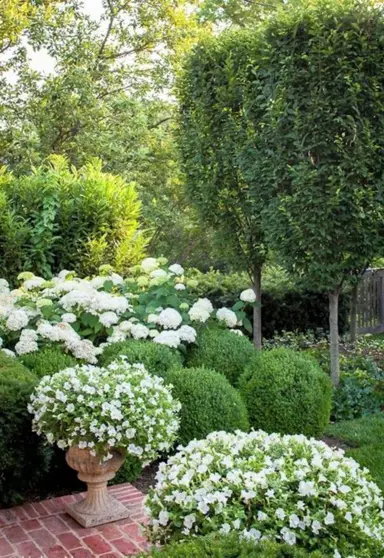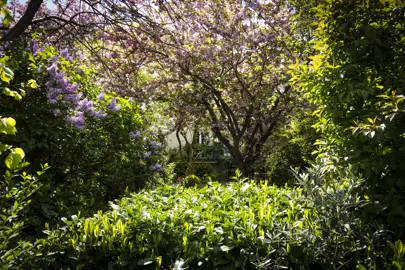
The Plant Company grows, sells, and ships Nerium plants throughout NZ. We pride ourselves on producing high quality plants and seeing the joy from our customers when they receive them. We do hope you enjoy them and support this NZ business that is passionate about Nerium plants.
Nerium Madonna is a shrub grown for both its flowers and foliage. This vigorous plant grows densely with branches holding long, dark green leaves. In...
Nerium Cherry Red is a shrub grown for both its flowers and foliage. This vigorous plant grows densely with branches holding long, dark green leaves...
Nerium Dr Golphin is a shrub grown for both its flowers and foliage. This vigorous plant grows densely with branches hosting long, dark green leaves...
Nerium Luteum Plenum is a shrub grown for both its flowers and foliage. This vigorous plant grows densely with branches holding long, dark green...
Nerium Mrs Roeding is a shrub grown for both its flowers and foliage. This vigorous plant grows densely with branches holding long, dark green...
Nerium Provence is a shrub grown for both its flowers and foliage. This vigorous plant grows densely with branches holding long, dark green leaves...
Nerium Punctatum is a shrub grown for both its dazzling display of flowers and foliage. This vigorous plant grows densely with branches holding long...
Nerium Ruby Lace is a shrub grown for both its flowers and foliage. This vigorous plant grows densely with branches holding long, dark green leaves...
Growing colourful shrubs in your garden delivers a vast range of benefits:
We have the largest variety of Oleander plants and the right one for your space. Our plants have been selected to thrive in NZ’s climate. We grow and stock only the highest quality plants, sourcing them locally, and from NZ’s leading nurseries. Each plant is packed and transported with extreme care, ensuring it arrives to you in the same condition it was in when it left the nursery. If you are wanting to buy Nerium plants, shop with confidence from the best in the industry.
1. Is there oleander in New Zealand?
Yes, oleander (Nerium oleander) is found in New Zealand, particularly in the warmer North Island regions. It is a common garden plant and can also be found growing wild in some areas. Oleander is a popular choice for gardens because of its attractive flowers and its ability to tolerate a variety of conditions.
However, it is important to note that oleander is a highly toxic plant. All parts of the plant, including the leaves, flowers, and sap, contain cardiac glycosides, which can be fatal if ingested. Children and pets are particularly at risk of poisoning, as they may be more likely to put oleander leaves or flowers in their mouths.
If you are considering planting oleander in your garden, it is important to take steps to prevent poisoning. This includes keeping oleander plants out of reach of children and pets, and wearing gloves when handling the plant. It is also important to be aware of the symptoms of oleander poisoning, which can include nausea, vomiting, diarrhoea, dizziness, weakness, and cardiac arrest. If you think you or someone you know has been poisoned by oleander, seek medical attention immediately.
2. How fast does Nerium grow?
Nerium, commonly known as Oleander, is a fast-growing shrub or small tree that can grow up to 2-6 meters tall. It typically produces 30-60 cm or more of new growth per year.
3. Is oleander and Nerium same?
Yes, oleander and Nerium are the same plant. Nerium oleander is the scientific name for the flowering shrub or small tree commonly known as oleander. It is the only species currently classified in the genus Nerium.
4. What are the disadvantages of Nerium oleander?
Although Nerium oleander, commonly known as oleander, is a popular ornamental plant with attractive flowers and tolerance to various conditions, it also has several disadvantages that make it a less desirable choice for some gardeners and homeowners. Here are some of the main drawbacks of oleander:
In conclusion, while oleander offers some aesthetic appeal and tolerance to various conditions, its toxicity, potential for skin irritation, unpleasant odor, susceptibility to pests and diseases, limited edibility, potential for environmental disruption, specific care requirements, potential harm to pollinators, limited indoor suitability, and potential for property damage make it a less desirable choice for many gardeners and homeowners. It is important to carefully consider these disadvantages before planting or keeping oleander in your garden or around your home.
5. Is it OK to smell oleander flowers?
While the fragrance of oleander flowers is generally considered pleasant and sweet, it is important to exercise caution when smelling them. The sap and other parts of the oleander plant contain toxic substances called cardiac glycosides, which can cause skin irritation and allergic reactions in some individuals. Inhaling the pollen of oleander flowers can also trigger allergic reactions, especially in those with sensitivities to pollen.
Therefore, it is advisable to avoid direct contact with oleander flowers and to refrain from smelling them closely. If you experience any adverse reactions after exposure to oleander flowers, such as skin irritation, respiratory issues, or dizziness, seek medical attention promptly.
6. Why is oleander so toxic?
Oleander (Nerium oleander) is a highly toxic plant due to the presence of cardiac glycosides, a group of natural compounds that affect the heart's ability to function properly. The most potent cardiac glycoside in oleander is oleandrin, which is found in all parts of the plant, including the leaves, flowers, and sap.
Cardiac glycosides work by interfering with the heart's sodium-potassium ATPase pump, which is responsible for maintaining the balance of these electrolytes within heart cells. This disruption in electrolyte balance can lead to abnormal heart rhythms, heart failure, and even death.
The toxicity of oleander is particularly concerning for children and pets, who may be more likely to ingest parts of the plant due to their smaller size and curiosity. Ingestion of even small amounts of oleander can cause serious health problems, including nausea, vomiting, diarrhea, dizziness, weakness, and cardiac arrest.
In addition to the risk of poisoning from ingestion, oleander can also cause skin irritation and allergic reactions in some individuals. The sap and other parts of the plant can cause dermatitis, redness, and itching. Inhaling the pollen of oleander flowers can also trigger allergic reactions, especially in those with sensitivities to pollen.
Due to its high toxicity and potential for skin irritation, it is important to handle oleander with care. When gardening with oleander, it is recommended to wear gloves to avoid direct contact with the plant. If you suspect that you or someone you know has been poisoned by oleander, seek medical attention immediately.
Whether you need assistance finding the plant you’re looking for or you simply want to know more about who we are and what we do, we invite you to get in touch with us today. A member of The Plant Company team will get back in touch as soon as possible.


